#hemopet
Text
Dr. Jean Dodds
Aka Dr. Jean Frauds
I went to look at her website for Nutriscan after someone recommended it for a dog who was displayed some allergy symptoms.
Nutriscan does not test for allergies. Only "insensitivities". Under the information page, she explains that they test for certain immunoglobulins which only actually identify what animals have eaten. Also the only information she cites is her own.
Here is the list of articles that Skeptvet has.
Her practice relies heavily on case studies and testimonials which are a grey area with the FDA in classic snake oil salesmen style.
Skeptvet has an excellent rundown of all the questionable pseudoscience that Dodds uses for the Nutriscan
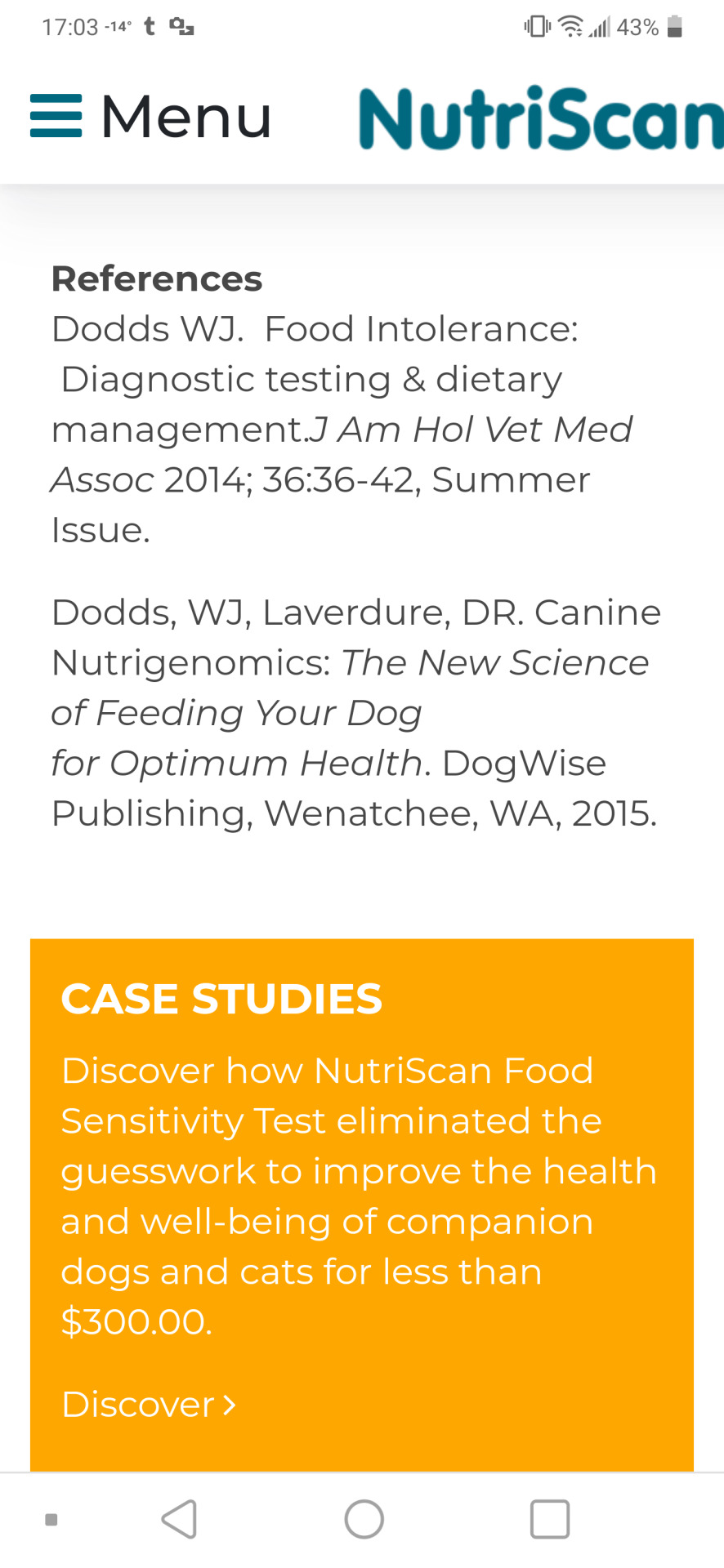
Sawbones has a whole episode on nutritional sensitivity testing as well.
Feel free to add to this post
#dog#dogs#dogblr#cat#catblr#pet#animal#dodds#dr jean dodds#jean dodds#animal health#fraud#sc#scam#nutriscan#hemopet
12 notes
·
View notes
Text
The Complicated Pet Food Industry

In general, the pet food industry operates in a fairly veiled manner – particularly the larger manufacturers in the kibble segment. Current primary concerns have focused microbial contamination and the presence of ingredients undeclared on the label. Indeed, a 2013 study of dry pet foods used for food elimination trials stated that 80% of selected pet food diets were contaminated with unidentified ingredients.
More recently in 2018, a study critically assessed published discrepancies between ingredients and labeling in commercial pet foods, including those with “novel” or “limited” ingredients and containing micronized hydrolysates. Unexpected added ingredients were more frequently detected than those missing from the label.
The authors searched 2 article databases on July 7, 2017, and January 12, 2018, for relevant studies, and screened abstracts from the leading international veterinary dermatology congresses for reports on pet food labeling and ingredients. The resulting data were extracted from 17 articles and 1 abstract. The studies varied both in the number of pet foods tested (median: 15; range: 1- 210) and that of ingredients specifically evaluated (median: 4; range: 1-11). Studies most often employed either PCR to detect DNA or ELISA to identify proteins from 1 or more vegetable or animal species. Two studies used mass spectrometry to increase the number of detectable proteins.
The various methods found ingredients that were not on the label in 0-83% (median: 45%) of tested diets; this percentage varied between 33-83% in pet foods with novel or limited ingredients that are typically proposed for elimination diets. Similarly, ingredients were found to be missing from the label in 0-38% (median: 1%) of tested foods. Finally, 6 studies included evaluations of several hydrolysate-containing pet foods: mislabeling with unlabeled or missing ingredients was found only in 1 of them.
These statements should give everyone pause, since food elimination trial diets literally are used to figure out which food ingredient is causing a medical condition. This would be like a product’s packaging saying a product was “nut free”, when it in fact contains nuts.
As this is apparently happening with pre-packaged pet food elimination diets, it is not surprising that it can also apply generally to commercial pet diets. Think about the number of steps from “farm to bowl” meat ingredients must go through: farm to slaughterhouse to processing plant to possibly another processing plant and another plant to the packaging plant. Then, you need to factor in the grains, fruits, vegetables, and the vitamin and mineral packs that are added. This scenario barely scratches the surface.
To highlight the huge marketing impact this issue has had on the multibillion dollar pet food industry since May 2014, litigation between two very large pet food manufacturers and their suppliers about the listed and actual ingredients in their diets is ongoing through the federal courts. The back-and-forth litigation and its attendant publicity has given the public and world a mere glimpse into the pet industry.
The federal government has been involved and the accusations and findings have lead to criminal indictments and verdicts, with more possibly yet to come.
W. Jean Dodds, DVM
Hemopet / NutriScan
11561 Salinaz Avenue
Garden Grove, CA 92843
References
Ricci, R., Granato, A., Vascellari, M., Boscarato, M., Palagiano, C., Andrighetto, I., Diez, M. and Mutinelli, F. (2013), Identification of undeclared sources of animal origin in canine dry foods used in dietary elimination trials. Journal of Animal Physiology and Animal Nutrition, 97: 32–38. doi: 10.1111/jpn.12045.
Olivry T, Mueller RS. Critically appraised topic on adverse food reactions of companion animals (5): discrepancies between ingredients and labeling in commercial pet foods. BMC Vet Res 2018: 14:24-28.
7 notes
·
View notes
Photo

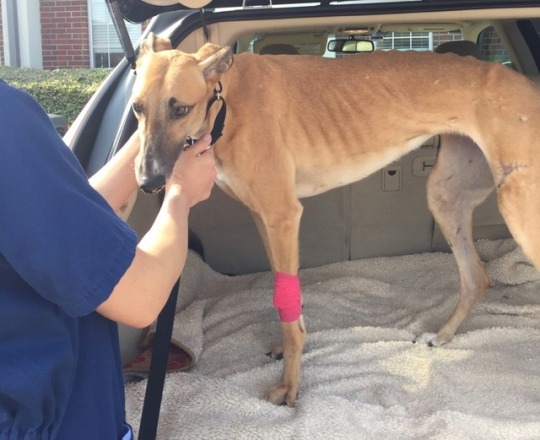
GALTx eNews: Treasure Every Happy Ending!
When we say "no grey turned away," we mean we will not turn away a hound seeking a forever home because of the need for expensive veterinary care. Recently, two greys with significant health issues called on us for just this kind of help.
First, on September 14th, we welcomed Shelby who ran stray until she collapsed in a residential yard. Shelby weighed all of 38 pounds and appeared shockingly thin. We are giving her frequent small meals to help her gain weight. Shelby tested negative for heartworm but positive for Ehrlichia Canis. She may require two to three rounds of treatment for Ehrlichia Canis and each round costs nearly $700. Although she is still a little weak, we anticipate that she will fully recover.
On September 15th, we welcomed Cactus, a three year old retired racer from Florida. She had a high fever and difficulty breathing. Cactus received her preliminary evaluation from Dr. Jeff Ellis of VCA Preston Park Animal Hospital then transferred to an emergency clinic for administration of inter-nasal oxygen over the weekend. She also received plasma and two units of packed red blood cells generously donated by Hemopet.
On Monday, Cactus moved to VCA Animal Diagnostic Clinic for further treatment by Dr. Brandy Porterpan. Cactus received the best of care as comfortable as she could be in an enclosed oxygen unit while the vets ran tests, including an ultrasound on her liver and spleen and a test for fungal infection. None of the tests revealed her underlying issue and so her vets planned a biopsy of her lungs. But on Wednesday, before the biopsy could be completed, Cactus lost her fight. We will continue to work with her vets to determine what took her young life. We are left with broken hearts and vet bills approaching $10,000.
Cactus reminds us that happy endings must be treasured as they are never guaranteed and we remain committed to giving each hound the best possible chance. Please help us continue to respond when called by donating to the Miss Mesa Fund in Cactus's honor. Many thanks to those of you who have already donated for her. We are forever grateful for your continued support.
#galtx enews#cactus#shelby#treasure happy endings#no guarantees#snootblr#dogblr#vet bills#greyhounds#retired racers#retired racing greyhounds#dogs#pets#thank you#hemopet
5 notes
·
View notes
Link
0 notes
Text
The Best Dog Food for Itchy Skin
The post The Best Dog Food for Itchy Skin by Elizabeth Anderson Lopez appeared first on Dogster. Copying over entire articles infringes on copyright laws. You may not be aware of it, but all of these articles were assigned, contracted and paid for, so they aren’t considered public domain. However, we appreciate that you like the article and would love it if you continued sharing just the first paragraph of an article, then linking out to the rest of the piece on Dogster.com.
You’re watching TV and hear it again — scratch, scratch, chew, chew. Yes, that sound can be annoying, but that’s nothing compared to how your dog feels trying to get relief from itchy skin or related ailments. So, how do you relieve itchy skin on dogs? One of the best ways to do it is through diet. Let’s look at the best dog food for itchy skin.
First, why do dogs get itchy skin?
Why do dogs get itchy skin in the first place? Photography ©Christian Buch | Getty Images.
Before we break down the best dog food for itchy skin, let’s look at why dogs get itchy. Just like when people get an itch, there are multiple possible reasons for dogs — a major one being allergies. But how to tell? Signs of allergies include itching, rash and hair loss, according to Doug Knueven, DVM, a holistic vet with Beaver Animal Clinic in Beaver, Pennsylvania.
Jean Dodds, DVM, founder of Hemopet, based in Garden Grove, California, says crusty sores with intermittent healing and acute breakouts can be signs of chronic skin infections.
“The most common cause of itchiness and skin self-trauma are allergic reactions to flea bites, environmental allergens and food allergy,” adds Sean J. Delaney, DVM, MS, DACVN (board certified Veterinary Nutritionist of the American College of Veterinary Nutrition), who operates Davis Veterinary Medical Consulting in Davis, California. “Collectively, these allergens work together to cause pruritus, the fancy word used for itchiness, in allergic dogs. Often eliminating or controlling even one of these allergens can lead to a reduction or elimination of signs.”
Dr. Dodds also cites Malassezia yeast infections, dry flaky skin and dandruff as causes of chronic itching, as well as chewing and licking feet.
Whether your dog has all-over itching or hot spots, which Dr. Knueven defines as “just an area of intensely itchy skin,” not treating the cause of your dog’s itching can make things worse, including pyoderma — another fancy word, this time for skin infections.
“Ignoring frequent or aggressive scratching can lead to inflammation and self-trauma and subsequent infection with bacteria and yeast present on the body or in the environment that normally is kept at bay by intact and healthy skin,” Dr. Delaney says.
And those problems can go beyond the physical: “Painful sores can lead to serious stress and behavioral issues with the constant skin irritation and itching,” Dr. Dodds says.
The best dog food for itchy skin
What is the best dog food for itchy skin? Photography ©ra3rn | Getty Images
While topical treatments may provide relief (or even a toy to get your dog’s mind temporarily focused elsewhere), don’t overlook the benefits that come from the inside-out approach. Namely, using food and supplements to help heal the skin while nourishing the body.
“Typically once flea bite preventive strategies are used (e.g., topical flea adulticide), one will try and see if addressing any underlying food allergies will help reduce scratching,” Dr. Delaney says. “This is done — as environmental allergens often cannot be completely avoided — and treatment is more challenging.”
But where to begin when it comes to the best dog food for itchy skin? Veterinarians describe multiple approaches. “Grain- and gluten- free foods are wise to start with, plus limiting meats and fowl to grass-fed rather than grain-fed,” according to Dr. Dodds.
“If skin issues are just a poor-quality coat or skin flakiness, a change to another commercial food slightly richer in essential nutrients that support skin health may be indicated,” Dr. Delaney says. “Key essential nutrients supporting skin health include protein, amino acids (especially an often limiting one, methionine), linoleic acid (the essential fatty acid), vitamin A, some B vitamins and trace minerals like zinc.”
When it comes to foods used to heal that itch, a discussion with your vet about your dog is likely in order because there is clearly no one answer — or cause. “It is important to realize that the protein from animal meats, poultry and fish, as well as from plants such as legumes, tubers and grains can all cause an allergic reaction,” Dr. Delaney says.
And finding what works may not be a case of one and done. “Rotate food sources every four to six weeks but not more often than every two weeks to help induce immune tolerance,” recommends Dr. Dodds.
How to switch your dog to find the best dog food for itchy skin
What is the best way to switch your dog’s diet? Photography ©mediaphotos | Getty Images.
When you change your dog’s diet in order to find the best dog food for itchy skin, avoid going cold turkey. “A switch to a raw diet, or any food change, should be done gradually,” Dr. Knueven says. “Start by adding ¼ the amount of the recommended daily amount of the new food and ¾ of the current diet. After a week, increase it to 50/50. After another week, go to ¾ new food and ¼ previous food. After a week, give just the new food.”
Dr. Delaney has another tip for transitioning to the best dog food for itchy skin. “The effects on the GI tract of a sudden diet change can be minimized by ensuring the new food truly is novel for the pet, and the fat, fiber and moisture levels are kept somewhat similar to the previous diet.”
What not to feed a dog with itchy skin
What should you avoid feeding a dog with itchy skin? Photography © GlobalP | iStock / Getty Images Plus.
Then there’s the flip side of determining what to feed a dog plagued by dermatological issues — what not to feed. Again, this can vary. Dr. Dodds recommends an Eastern medicine approach. “Avoid pro-inflammatory ‘hot’ foods in Chinese medicine like chicken and venison, plus related fats, oils and flavorings. Calming foods are turkey and white-colored fish. Avoid shellfish generally.”
Dr. Delaney recommends the above-mentioned novel approach when it comes to determining what food types to avoid. “Even if feeding an uncommonly fed allergen like venison works in many dogs, if a specific allergic dog has always been fed venison, a diet that uses a common food like chicken may be a better choice if the chicken is ‘novel’ or new to them.
“A food that has never been fed to a dog or that is novel to them is often fed in a limited-ingredient diet when food allergy is suspected or needs to be treated,” Dr. Delaney adds. “The ingredients are limited to reduce the potential number of allergens the dog is exposed to.
Finally, Dr. Knueven likes the DIY approach, preferring a balanced raw diet. “I think the benefit is especially apparent for dogs with allergies,” he says.
Should you supplement?
Will supplements help your dog’s itchy skin? Photography ©alphaspirit | Getty Images.
Along with changing the diet, you can also look into supplements that may help. “Fish oil supplementation can help decrease the inflammation of allergies, and probiotics can help rebalance the immune system,” Dr. Knueven says.
However, Dr. Delaney says, “At times, fatty acid supplements may be suggested, but it is best to select a food that already has an appropriate fatty acid profile than try to supplement a food that doesn’t.”
Dr. Dodds suggests oral supplements, as well as a topical one to help Scooby stop scratching. “Dogs must have plenty of omega-3 fatty acids plus some omega-6 fatty acids; coconut oil in moderation (as it’s high in fat) and apple cider vinegar in the food.” Topically, Dr. Dodds recommends green tea on sores and for foot soaks.
Dr. Delaney cautions that some human foods intended to help might actually hurt. “It is important to remember that any enjoyed treats should be cautiously used in case they introduce food allergens that are not novel or tolerated in a food-allergic dog.”
When to expect results
How soon after switching to a diet to combat itchy skin should you expect to see results? Photography ©ThamKC | Getty Images
Just as people want to see pounds lost on the scale the second day of a diet, when it comes to the best dog food for itchy skin, we often want immediate results after making a change in diet or adding a supplement. Veterinarians cited as little as a few days up to several months, depending on your dog’s condition.
“If there is an underlying food allergy, then response can take up to 12 weeks in some cases, with 8 weeks being more common,” Dr. Delaney says. “If the skin issue is solely related to poor skin or coat quality due to a diet that isn’t meeting a pet’s specific needs for an essential nutrient like a fatty acid, improvement may be noticed in as early as several weeks.”
Hopefully, this information serves as food for thought when it comes to giving your furry friend some relief. It might just result in the only scratching is you scratching his belly or behind his ears.
Is your dog susceptible to itchy skin?
Dogs with white or lighter coats are more susceptible to skin issues. Photography ©GlobalP | Getty Images
Veterinarians point out that any breed or dog can have allergies, but some may be more prone to skin issues. There are a couple different forms of “skin deep” traits that may boost allergy propensity.
“Dogs with white or lighter coat colors can be more susceptible because of the effects of sunlight exposure,” says W. Jean Dodds, DVM.
Sean J. Delaney, DVM, MS, DACVN, Board Certified Veterinary Nutritionist of the American College of Veterinary Nutrition, cited breeds with extra skin folds as more likely to have skin diseases or issues. “If a pet lover is considering a specific pure breed as a new family member, it is best to discuss this concern, as well as any others that may be more prevalent, with their veterinarian.”
Dr. Dodds adds that some underlying diseases can make some dogs more prone to skin issues, with the following as just some examples:
Endocrinological — Hypothyroidism and thyroiditis
Hyperactive adrenal function — Cushing’s disease
Systemic autoimmune diseases — Discoid lupus, systemic lupus, Ehlers-Danlos syndrome and Sjögren (or Sjögren’s) syndrome
Fleas or food — which is the foe?
While either cause is painful, a trip to the vet is the first step in determining whether your dog’s itching and scratching is caused by fleas or food.
“Both can lead to self-trauma and infection,” says Sean J. Delaney, DVM, MS, DACVN, Board Certified Veterinary Nutritionist from the American College of Veterinary Nutrition. “The veterinarian will then treat any infection as well as address the root cause that led to the infection.”
Doug Knueven, DVM, a holistic veterinarian, starts with the “what’s most likely” approach.
“Flea allergy is the most common skin allergy,” Dr. Knueven says. “If an animal has fleas and is itching, I consider it a flea allergy until proven otherwise. The best way to rule out a food allergy is to switch the dog to a novel diet for eight weeks. If the skin clears, then he was allergic to something in the previous diet.”
Your dog can also be tested to pinpoint any allergens. W. Jean Dodds, DVM, describes the two types: “Serum-based environmental allergy screening (trees, weeds, grasses, pollens, fungi, molds, dust, fleas, etc.) and saliva-based (not serum-based) food-sensitivity testing.”
Tell us: What is the best dog food for itchy skin? What helped your dog stop itching?
Thumbnail: Photography by cmannphoto/istock.
About the author
Elizabeth Anderson Lopez is an award-winning writer based in Lake Forest, California. She and her husband have many pets, including two English Bull Terrier rescues named Dexter and Maybelene. You can contact her at fromconcepttocontent.com.
Editor’s note: This article appeared in Dogster magazine. Have you seen the new Dogster print magazine in stores? Or in the waiting room of your vet’s office? Subscribe now to get Dogster magazine delivered straight to you!
Read more about dog food on Dogster.com:
Using Coconut Oil for a Dog’s Itchy Skin
Can Dogs Eat Carrots? If So, Are Carrots Good for Dogs?
Dog Digestive System Basics — How Long Does it Take for a Dog to Digest Food?
The post The Best Dog Food for Itchy Skin by Elizabeth Anderson Lopez appeared first on Dogster. Copying over entire articles infringes on copyright laws. You may not be aware of it, but all of these articles were assigned, contracted and paid for, so they aren’t considered public domain. However, we appreciate that you like the article and would love it if you continued sharing just the first paragraph of an article, then linking out to the rest of the piece on Dogster.com.
1 note
·
View note
Text
IM so fucking pissed off, PETA is going after a non-profit organization i used to work at called hemopet.
Not only are the pictures out of context but its a blood donation, adoption center and of course peta tries to get it shut because god forbid someone actually does something useful for animals.
https://www.thedodo.com/lifesaving-canine-blood-bank-faces-closure-1968791546.html
http://www.hemopet.org/thank-you-for-your-support.html
http://www.hemopet.org/clients/14145/documents/Press/California-canine-blood-bank-disputes-PETA-abuse-claims.pdf
The greyhounds also have daily routines for walks, playtime and interactions with possible adopters.
Fucking hell, I’m so tired of PETA’s bullshit
2 notes
·
View notes
Text
a 1965 study suggested the average domestic dog lived only 4.5 years due to car accidents and poor care
Following the Florida ban, greyhound parks will be active and legal in only Alabama, Arkansas, Iowa, Texas, and West Virginia. For each of those states, too, the end is likely within sight.
long-distance transfers of cold blood only became feasible after World War II, according to historian Joanna Radin, as blood shipped to the Pacific front for transfusions into injured soldiers formalized a transnational “cold chain.”9 Fear of nuclear attacks that might require “tank cars of blood,” in one rough estimate, only reaffirmed the urgency of efforts that metamorphosed over the ensuing decades, with increasingly sophisticated freezers and refrigerators
new canine blood banks also hoped to pacify animal rights activists who criticized the older veterinary practice of keeping “house” dogs around for routine blood drawing. Dedicated “donor” dogs could be carefully fed, exercised, and standardized—a lying reserve for blood—without living confused lives as pets and donors.12 But the glowing report on Michael Newman’s Birmingham blood bank tacked on one further benefit of these new institutions: keeping old dogs alive for blood was more humane, it claimed, than the alternative of euthanasia, “especially for greyhounds, which are routinely destroyed once their racing careers are over.”
In the 1970s, for instance, retired Florida racing dogs were placed in smoky crates modeled on their starting containers in order to study the effects of carcinogens in cigarette tar. Never seriously touted, however, as a standard or “model organism” due in part to their large size, greyhounds failed to catch on as popular experimental animals.
By contrast, blood banking seemed uniquely suited to a breed of “40-mile-per-hour couch potatoes” subject to premature euthanasia and in possession of a unique characteristic: higher red blood cell counts than other dogs.15 Greyhounds display a marked tendency toward the universal donor canine blood type, Dog Erythrocyte Antigen (DEA) 4. As canine blood banking grew, the blood of greyhounds, still sporadically converted to profit on racetracks by pari-mutuel betting arrangements, joined more predictably “banked” materials like human sperm and breast milk as a novel form of biocapital, a commodity made from the messy stuff of life.
To placate animal rights activists, each greyhound would be offered up for adoption to nearby residents after one to two years as donors, a potentially life-saving reprieve from euthanasia.
In 2017, the National Greyhound Association formally prohibited transferring racers to such institutions, hoping to avoid activist censure—though it carved out an exception for “legitimate” banks, like Hemopet. Criticism, however, dogged canine blood banking from the start. A 1989 article in California’s Dixon Telegraph, for example, described animal lovers “shocked” by the Peninsula Humane Society’s practice of drawing blood from shelter dogs. The society’s president responded that they put down twelve dogs every month due to a lack of adoptions; taking a small quantity of blood beforehand was trivial by contrast.
Resistance crescendoed in 2019, as the ostensibly charitable project of donation-to-adoption was criticized as an insidious capitalization on traumatized “blood slaves”—a plight highlighted in 2015’s Mad Max: Fury Road, where universal human donors are made into walking “blood bags” for sick War Boys.
With support from PETA and other allied groups, Santa Monica state assembly member Richard Bloom proposed an overhaul of California’s regulations on canine blood banking—the only such laws in the country—incentivizing a shift from “closed donor” banks to voluntary donations from individual pet owners. No longer, activists hoped, would emaciated, over-bled greyhounds languish in wasteful solitude. Instead, California’s streets would soon grow as attuned to the sounds of the arriving bloodmobile as to the ice cream trucks of yore.
To those who defend individual donations from pets as more humane, Hemopet’s website refuses rosy sentimentalities, bluntly responding that “any animal blood donor is captive.”
https://www.cabinetmagazine.org/issues/67/bolman.php
0 notes
Video
Bradock e o Amor da Doutora Thais #bradock #tudopeloBradock❤️❤️❤️😍😍😍🙌🙌🙌🏿🙌🏾🙌🏽🙌🏼🙌🏻 #Amor #amor #direitodosanimais #direitoporamor❤ #direito @mayaradesigner20 @liiiiiiiil @pimentel2975 @anisianascimento.2020 @lele_._makeup @hemopets @veterinarialeopoldina #Gratidao (em Veterinária Leopoldina) https://www.instagram.com/p/CSC600GnPIV/?utm_medium=tumblr
#bradock#tudopelobradock❤️❤️❤️😍😍😍🙌🙌🙌🏿🙌🏾🙌🏽🙌🏼🙌🏻#amor#direitodosanimais#direitoporamor❤#direito#gratidao
0 notes
Photo
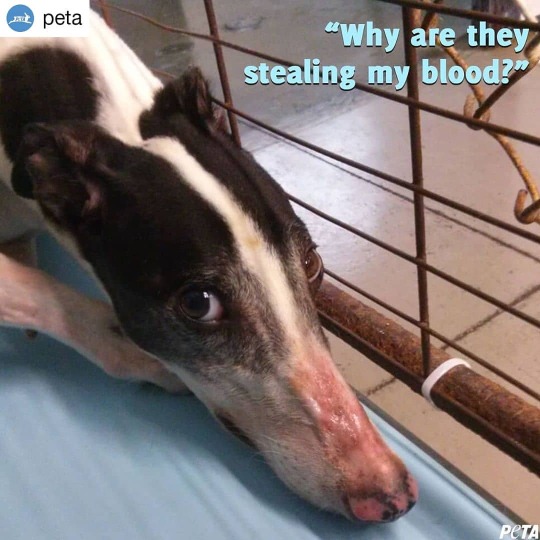
Garden Grove, California Sham “dog rescue” Hemopet imprisons greyhounds who have been discarded by the dog racing industry and BLEEDS them regularly for money. Celebrating #NationalDogDay means helping those who need our help the most. Tap the link in our profile to help these dogs now! http://peta.vg/2wmz ✴️▫️✴️▫️✴️▫️✴️▫️✴️▫️✴️▫️ #SaskiaReposts @peta ⛔ Trolls will not be entertained, only "removed". ⛔ #StopGreed #StopCruelty #RespectAllSentientBeings #SaveAnimals #HelpAnimals #AnimalRightsMatter #RespectPlanetEarth https://www.instagram.com/p/CEeTe_8pz1B/?igshid=axidvxbbed77
#nationaldogday#saskiareposts#stopgreed#stopcruelty#respectallsentientbeings#saveanimals#helpanimals#animalrightsmatter#respectplanetearth
0 notes
Photo

Doar sangue é um gesto de amor que salva vidas! . Transfusões de sangue são essenciais no tratamento de animais com doenças que levem à anemia. O sangue também deve estar disponível durante a realização de procedimentos cirúrgicos e no atendimento de vítimas de acidentes com perda sanguínea. . 🐶 Quais os critérios para um cão se tornar um doador? ✅ Idade entre 1 e 8 anos ✅ Peso mínimo de 25kg ✅ Temperamento dócil ✅ Vacinação e Vermifugação atualizadas ✅ Controle de pulgas e carrapatos ✅ Não apresentar doença ou transfusão prévia . 🐱 Quais os critérios para um gato se tornar um doador? ✅ Temperamento dócil ✅ Peso mínimo de 4kg ✅ Idade entre 1 e 7 anos ✅ Vacinação e Vermifugação atualizadas ✅ Controle de pulgas e carrapatos ✅ Não apresentar doença ou transfusão prévia . O processo para doar é seguro e não provoca efeitos colaterais. Além disso, é indolor e muito rápido. . Procure saber se na sua cidade existe um banco de sangue animal e permita que seu cão ou gato salve a vida de outros pets. E claro: converse com o médico veterinário de sua confiança para obter todas as informações necessárias para que seu companheiro se torne um doador. 😻 . . . #nutrivet #mayaravet #vidadevet #vetlife #veterinaria #lovemyjob #bestjobever #veterinary #nutricionistaveterinaria #veterinariarecife #veterinariaolinda #veterinariapaulista #veterinariadomicilio #veterinariaemcasa #vethomecare #alimentacaonatural #amooquefaco #medicinaveterinaria #medvet #medicaveterinaria #dogs #instadog #doesanguedoevida #doesangue #doacaodesangue #bancodesangue #hemopet (em Mayara Brandão Nutricionista Veterinaria) https://www.instagram.com/p/CCJtyD5pIma/?igshid=1jgkeq5axiu0j
#nutrivet#mayaravet#vidadevet#vetlife#veterinaria#lovemyjob#bestjobever#veterinary#nutricionistaveterinaria#veterinariarecife#veterinariaolinda#veterinariapaulista#veterinariadomicilio#veterinariaemcasa#vethomecare#alimentacaonatural#amooquefaco#medicinaveterinaria#medvet#medicaveterinaria#dogs#instadog#doesanguedoevida#doesangue#doacaodesangue#bancodesangue#hemopet
0 notes
Photo
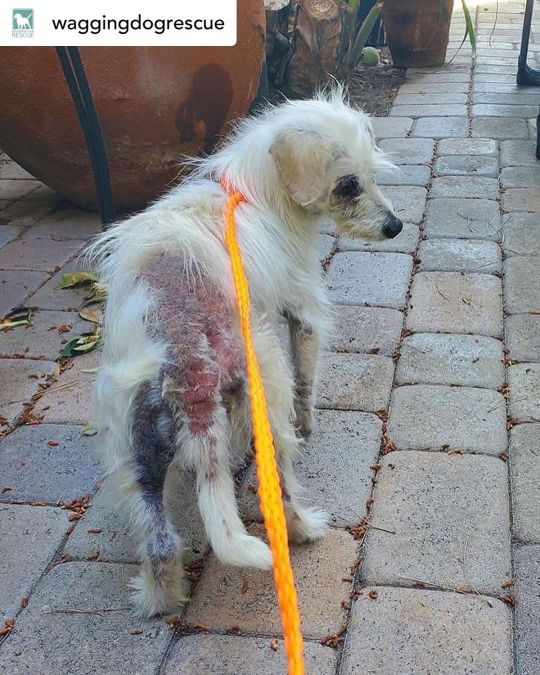
Posted @withregram • @waggingdogrescue Amidst all the DiscoverMe Project™ stuff we’ve been doing nonstop since mid-March, we’re still saving lives through our regular rescue program thanks to fosters saying, '𝘠𝘌𝘚, 𝘐’𝘭𝘭 𝘤𝘢𝘳𝘦 𝘧𝘰𝘳 𝘵𝘩𝘪𝘴 𝘣𝘢𝘣𝘦 𝘶𝘯𝘵𝘪𝘭 𝘴𝘩𝘦’𝘴 𝘩𝘦𝘢𝘭𝘵𝘩𝘺 𝘢𝘨𝘢𝘪𝘯 𝘢𝘯𝘥 𝘧𝘪𝘯𝘥𝘴 𝘵𝘩𝘦 𝘱𝘦𝘳𝘧𝘦𝘤𝘵 𝘧𝘢𝘮𝘪𝘭𝘺!’ So, we’d like to introduce you to our newest Wagging Dog. Please welcome sweet 𝗭𝗜𝗡𝗡𝗜𝗔 to our fam! 💖🐶🌸 This pretty 8 lb senior is being seen by our new OC vet today. We’re super excited to have one of our dogs at Hemopet Holistic Care in Garden Grove. We love the incredible pioneer Dr. Jean Dodds' Hemopet, Petlifeline, Hemolife & Nutriscan, and she has a team of amazing integrative vets so Zinnia’s in the best hands! Our poor girl arrived at OC Animal Care a week ago, suffering from long neglect, extremely thin. We originally thought she was going to be a DiscoverMe Dog™ but as soon as her DMP foster laid eyes on her, she offered to care for this pup until we return her to good health and find an awesome family to cherish her. YAY Zinnia! Like our GSD Blume, we chose a flower themed name for our new girl in anticipation of her blossoming this spring. 🌷 Zinnia is deaf. Our vet thinks she’s around 12 yrs old, a bit more than 7 estimated at the shelter. She has some age related eye changes but no cataracts. A mid-grade heart murmur, yucky grill, extremely overgrown nails curling back on themselves, and of course that skin. Good grief :’( Zinnia is so uncomfortable, so itchy. We’re anxious for her to feel better and to see her beautiful white fur filling in. 🙏 The estimate for today’s exam and preliminary diagnostics is $850-900 and we’d be so grateful for your help providing this critical care for sweet Z. We’ll be anxiously awaiting lab results (hopefully tomorrow) so we have an idea of what her lil body is dealing with and how we can best provide for her return to total wellbeing. We know she has a dental and spay in her future, as long as her ticker checks out. Add in a heart ultrasound too. 💰 #TaxDeductible #donations can be made via this fb post or - PayPal - [email protected] venmo https://www.instagram.com/p/B_5o4aNg-Y4/?igshid=1h64514homrjo
0 notes
Text
Can Inflammation Ever Be Good for the Body?

Oftentimes when we discuss inflammation on Dr. Dodds’ Pet Health Resource Blog, we focus on the bad chronic inflammation that could result in long-term diseases. Flipping the conversation on its head: can inflammation ever be good for the body? Yes; it can.
Acute inflammation (short-term) is the body’s defense system protecting itself from an injury or infection. Think about a cut on your skin. You may put a bandage on it or maybe some antibacterial cream. No matter what, you will more than likely have short term inflammation signaled by redness and slight swelling. This is the body rushing blood, fluid and proteins to the cut, which generates swelling and heat to protect and repair damaged tissue. This reaction is called the “Triple Response of Lewis” that occurs from an injury to the skin, which produces an initial red area, followed by a flare around that area, and then a wheal. It is due to the release of histamine. The outcome is setting the stage for healing. If the cut does not heal or gets worse, you should consult a doctor for yourself or veterinarian for your companion pets.
If you or your companion pet twist a joint like an ankle, the body surrounds the area with inflammatory swelling to prevent further injury. It should eventually heal over a few days. You should definitely take it easy on the injured area to speed up the healing process and make the pain go away. The opposite of acute joint injury is chronic tissue inflammation, which predisposes to infection and eventually, if not addressed, can lead to obesity and even cancer. These injuries need prompt medical attention.
With pets, it would be best to go straight to your veterinarian since they could have bruised or broken a bone.
Fever is another inflammatory example of the body’s natural defense mechanism against any foreign invaders. In this instance, white blood cells spit out interleukins (a group of cytokine molecules that regulate the body’s cellular immune response to help fight bacteria. If a fever spikes to a dangerous level that may compromise the brain, we clearly need to consult a doctor or veterinarian. However, a short-term low-level fever is the body working to help set the stage for healing.
We have known that exercising is good for the body, brain and emotional state for centuries. The Greeks coveted muscular bodies. Colloquialisms we use these days include “ripped” or “cut” to describe a muscular body. Those words are definitely apropos – as we rip it apart to cause it to regenerate.
Think about it, a new workout routine or a particular exercise is first general soreness, which then signals progress. This soreness comes from natural muscle cell inflammation and damage. Inflammation rushes immune cells to the location to those sore areas to repair the muscle damage. In fact, lack of an adequate inflammatory response contributes to poor muscle regeneration.
We know that exercise helps combat obesity, which results from the chronic cellular oxidative stress of inflammation that results in disease. So, exercise – which produces good inflammation – then has an anti-inflammatory effect by helping to control weight.
Flipping the Inflammation Protocol
For years, the typical health care protocol was to suppress inflammation. The arsenal of treatment options that are available and still used include acetaminophen such as Tylenol to reduce fevers, nonsteroidal anti-inflammatory drugs (NSAID) like ibuprofen/Advil, or steroids. The biggest conundrum has been the side effects with each of these therapies. Acetaminophen could damage the liver, ibuprofen could cause gastrointestinal bleeding, and steroids could create a number of issues like weight gain, and adrenal or kidney damage. Researchers are actively studying how to suppress inflammation without generating these deleterious problems.
Indeed, it has been known for a long time that excess anti-inflammatory medication actually slows the wound healing of acute tissue inflammation. So now the question becomes: how can we utilize the positive effects and control the negative effects of tissue inflammation?
Scientists are also thinking “outside of the box” of suppression: perhaps by inflaming another part of the body so that it can combat chronic or bad inflammation. This approach could be risky and so they are proceeding cautiously.
For instance, a group of researchers in 2011 noted that activating two proteins via inflammation helps to maintain normal blood sugar levels in obese and diabetic mice. Essentially, if we increase the levels of these inflammatory signals, they could actually be therapeutic in diabetes and obesity. Problem is though, inflaming them might worsen other inflammatory diseases like asthma and rheumatoid arthritis.
Clearly, while inflammation can be good tissue response , we need to be able to harness, tame, and calm it down when it becomes overactive and bad.
W. Jean Dodds, DVM
Hemopet / NutriScan
11561 Salinaz Avenue
Garden Grove, CA 92843
References
Anft, Michael. “Understanding Inflammation.” Johns Hopkins Health Review, 2016, http://www.johnshopkinshealthreview.com/issues/spring-summer-2016/articles/understanding-inflammation.
Lee, Jaemin et al. “p38 MAPK-mediated regulation of Xbp1s is crucial for glucose homeostasis”, Nature Medicine, vol. 17,10 1251-60. 4 Sep. 2011, doi:10.1038/nm.2449, https://www.ncbi.nlm.nih.gov/pmc/articles/PMC4397266/.
Lu, Haiyan et al. “Macrophages recruited via CCR2 produce insulin-like growth factor-1 to repair acute skeletal muscle injury”, FASEB journal : official publication of the Federation of American Societies for Experimental Biology, vol. 25,1 (2011): 358-69, https://www.ncbi.nlm.nih.gov/pmc/articles/PMC3005436/.
#acute inflammation#chronic inflammation#cooking fever#triple response of lewis#hemopet#dr. jean dodds#sprained ankle#scratch
7 notes
·
View notes
Photo
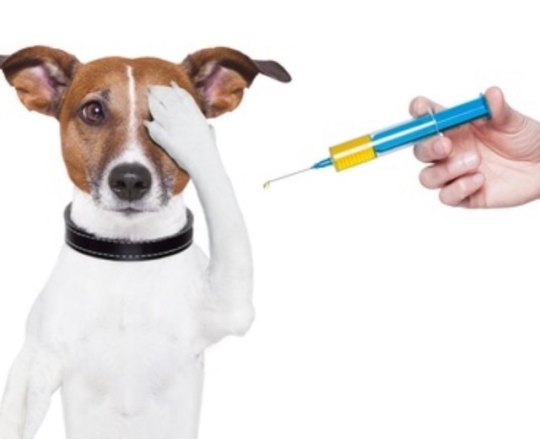
Still vaccinating your pet every year? By Kim Campbell Thornton Vaccinations have saved many pets' lives over the years, but they aren't without risk. Now, with new research showing that immunity may last longer than once thought, veterinary experts say it's safer to decrease the frequency of most shots that typically have been given every year. Side effects from vaccinations range from mild itching and swelling to anaphylactic shock leading to death. Cats may develop vaccine sarcomas, which are cancers that develop at the site of the injection. And dogs may develop certain autoimmune diseases. Veterinarians have suspected for years that annual vaccinations for cats and dogs aren’t necessary, but large, well-controlled studies just didn’t exist to prove it one way or the other. With the exception of rabies vaccine, the U.S. Department of Agriculture doesn’t require data beyond one year for any vaccine. With that being the case, vaccine manufacturers arbitrarily recommended annual vaccinations, and most veterinarians, concerned about liability issues, concurred. Sometimes immunity lasts a lifetime More recently, however, several published studies have shown that immunity provided by some vaccines lasts for much longer than one year and in some cases for a lifetime. "We know that for [canine] distemper and parvo, for example, the immunity lasts a minimum of five years, probably seven to nine years, and for some individuals for a lifetime,” says veterinarian Jean Dodds, founder of Hemopet, the first nonprofit national blood bank program for animals, located in Santa Monica, Calif. “For cats, so far we have challenge data out nine years showing that immunity is still protective," says Dodds. And with rabies vaccine, new data indicate the immunity lasts for at least seven years, she says. What does all this mean for your dog or cat? As with many other aspects of veterinary medicine, vaccinations are becoming individualized, but in most cases, fewer and less frequent vaccinations are the way to go. Most animals need only what are known as core vaccines: those that protect against the most common and most serious diseases. In dogs, the core vaccines are distemp https://www.instagram.com/p/B0L5ng1DPer/?igshid=8fnp3lpao1sp
0 notes
Text
so, uh, a thing that is the case is that apparently, most greyhounds have the universal blood type, and higher-than-average red blood cell count (because running) so they’re very good blood donors
also a thing is that there’s a place called Hemopet in california which is a colony (their word, not mine) of 200 greyhounds that they just, like, harvest blood from
5 notes
·
View notes
Link
Video shows dogs bred for and discarded by the racing industry are imprisoned in barren conditions at Hemopet and bled repeatedly for 18 months or more.
0 notes


